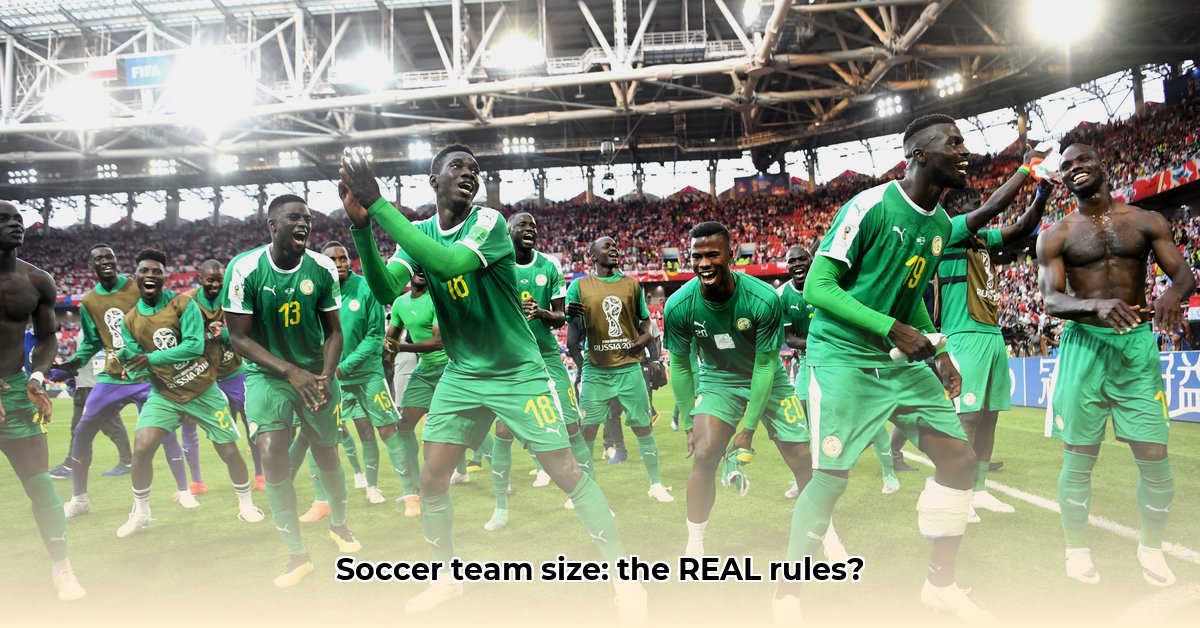The Starting Eleven: Foundation of the Beautiful Game
At the heart of professional soccer lies the starting eleven – the carefully selected group of players who initiate the match. These eleven individuals, one goalkeeper and ten outfield players, represent the team’s initial strategy and tactical approach. The goalkeeper, uniquely positioned as the last line of defense, is the only player permitted to use their hands within the penalty area during open play. This distinction highlights the specialized role and importance of the goalkeeper in preventing goals. The remaining ten outfield players, each with their specific roles and responsibilities, collaborate to navigate the field, control possession, create scoring opportunities, and ultimately secure victory.
The Substitutes: Tactical Adaptability and Game-Changers
Beyond the starting eleven, the substitutes represent a crucial element of a soccer team’s composition. These players, who wait on the sidelines, provide tactical flexibility and the potential to shift the momentum of a match. The number of permitted substitutions varies depending on the specific league and competition, commonly ranging from three to five. This dynamic element of the game allows coaches to respond to injuries, fatigue, or tactical necessities by introducing fresh players with specific skills and attributes. A well-timed substitution can inject energy into a tiring team, bolster a struggling defense, or provide the decisive attacking spark needed to secure a win. In the high-stakes world of professional soccer, substitutes often prove to be game-changers, altering the course of a match with their impact.
The Squad: Depth, Strategy, and Long-Term Vision
Encompassing both the starting eleven and the substitutes is the larger team squad. This group of registered players, typically numbering between 23 and 30, provides depth and strategic options throughout a season. A robust squad allows teams to navigate injuries, suspensions, and the demanding schedule of multiple competitions. Effective squad management requires careful consideration of player fitness, form, tactical adaptability, and the specific demands of upcoming matches. Building and maintaining a strong squad is a testament to a team’s long-term vision and commitment to sustained success. This depth allows for strategic rotation, ensuring players remain fresh and competitive throughout the season, while also providing opportunities for emerging talent to develop and contribute.
Youth Soccer: Cultivating Skills and Nurturing Potential
Youth soccer adopts a different approach to team size, prioritizing player development and balanced participation. Unlike the fixed eleven of professional soccer, youth teams vary in size depending on the age group and specific league regulations. Smaller teams ensure increased ball contact for each player, maximizing opportunities to hone individual skills, develop game understanding, and experience the joy of the sport.
| Age Group | Typical Team Size | Rationale |
|---|---|---|
| Under 6 (U6) | 3-5 | Maximizes individual ball interaction and foundational skill development. |
| Under 8 (U8) | 5-7 | Introduces basic team concepts while maintaining significant individual involvement. |
| Under 10 (U10) | 7-9 | Bridges the gap between individual skill development and team play. |
| Under 12 (U12) | 9-11 | Prepares players for the full-sided game while maintaining a development-focused environment. |
These carefully structured team sizes create a positive and manageable learning environment. Coaches can focus on fundamental techniques, tactical awareness, and the principles of fair play, nurturing young talent and preparing players for the challenges of higher-level competition.
Variations and Exceptional Circumstances: Adapting to the Unpredictable
While the standard 11-player format defines professional soccer, variations exist to accommodate specific contexts and circumstances. Informal matches and friendly games often deviate from this norm, allowing for flexible team sizes based on mutual agreement. In official competitions, injuries or unforeseen events might force a team to play with fewer than eleven players if all permitted substitutions have been exhausted. These exceptional scenarios highlight the adaptability of soccer while upholding the principles of competition and sportsmanship. Additionally, certain leagues and tournaments may implement unique rules regarding substitutions, squad sizes, or even player eligibility, further demonstrating the dynamic and evolving nature of the sport. Understanding these nuances adds another layer of depth to appreciating soccer’s global reach and its capacity to adapt to diverse environments.
- Amazing March Fun Facts: Unveiling History & Celebrations - April 15, 2025
- Master how to write height: A complete guide - April 15, 2025
- How High Are Your Standards Test: Find Your Perfect Match Now - April 15, 2025
















